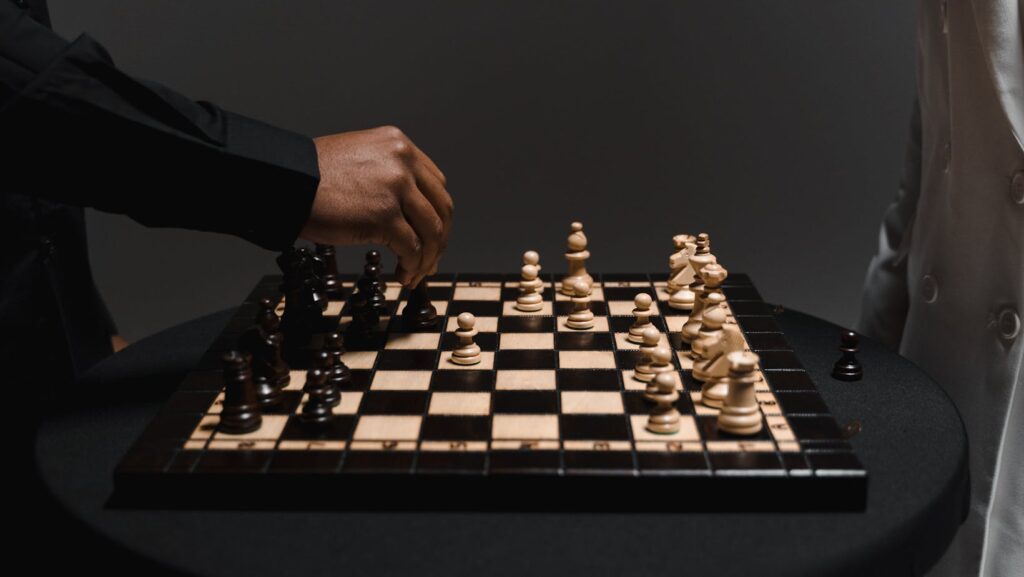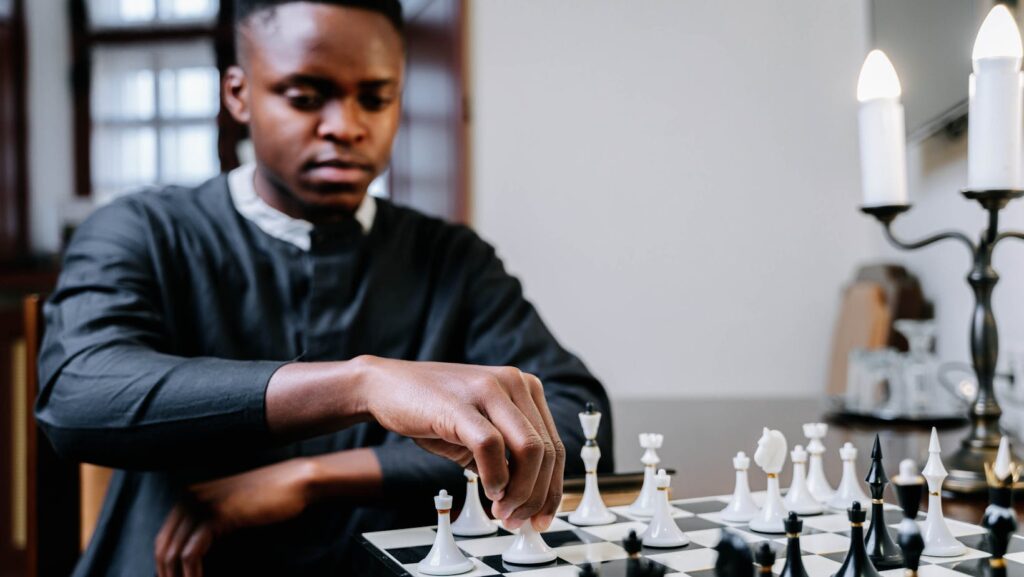In the intricate world of chess, two broad approaches often come to the fore: tactical vs strategic chess. But what’s the real difference between tactical vs strategic chess, and how can understanding them enhance your game?
Tactical vs Strategic Chess
Tactical Chess
Tactical chess play forms an essential part of the overall gaming strategy, focusing predominantly on short-term gains. It requires a player to include shrewd exchanges, forceful attacks and exploit undecided increments in their gameplay.
Key Principles of Tactical Play

The foundation of tactical play lies in examining immediate threats and opportunities. It hinges on four main principles:
- Pin: Players pin an opponent’s piece using another of lesser value. For example, using a bishop to pin a knight against the opponent’s queen. This limits the pinned piece’s mobility and presents an opportunity for players to strengthen their position.
- Fork: Implementing a fork involves placing a single piece where it attacks two of the opponent’s pieces simultaneously. Here’s an illustration: a knight placed in such a position that, on its next move, it could capture either the opposing bishop or rook.
- Skewer: Tactics involving a skewer position one piece to attack an opponent’s valuable piece, forcing it to move and expose a second piece. For instance, a rook confronting the adversary’s king forces it to move, exposing the queen behind it.
- Discovered Attack: In a discovered attack, a player moves a piece revealing an attack by another piece. To give an example, moving a pawn forward may expose a direct attack line for the bishop.
Exploring Strategic Chess
As the article advances into strategic chess, we focus on the long-term plans involved in the maneuvers. Unlike the tactical exploits with immediate gratification, strategic chess relies heavily on looking ahead, taking into account the entire board and ideally multiple moves in advance. Now, let’s delve into the fundamental strategies and pivotal case studies that exemplify strategic chess mastery.
Core Strategies in Chess

Firstly, understanding the concept of ‘Center Control’ is elemental. It’s the practice of positioning the pieces toward the center of the board, granting them maximum access and movement. For example, central pawns and knights allow for greater control.
Secondly, ‘Piece Development’ gets into play. Piece development refers to the practice of moving pieces from their original positions, enhancing their activity on the board. The knight before bishop rule is a typical example of piece development.
Thirdly, ‘King Safety’ comes into the picture. The safety of the king is always vital and successful players often put precautions in place to mitigate potential threats. Castling serves as a perfect example, cloistering the king behind a shield of pawns.
Tactical vs Strategic Chess: Differences and Importance
Tactical and Strategic Decisions in Famous Matches
Historic matches offer a wealth of insight into intricate interplay of tactical and strategic elements in chess. For instance, consider the showdown between Anatoly Karpov and Viktor Korchnoi in 1978. Karpov, a master strategist, held sway with meticulous planning, dictating the pace and direction of the game with finesse. On the other hand, Korchnoi’s ferocious tactical nous saw him intent on exploiting instantaneous opportunities.
How Top Players Balance Both

Balancing tactical and strategic aspects forms a key facet of top-level chess play. Consider Garry Kasparov, renowned for his aggressive and sharp style. Nevertheless, his play was not limited to short-term tactical nuances but also exhibited a deep understanding of strategic elements. Similarly, Paul Morphy, renowned for his romantic, aggressive style, mixed sharp tactical play with well-crafted strategic designs, attesting to the fact that mastering chess requires a fine balance between being a tactician and a strategist.
Achieving Balance
Understanding the nuances between tactical vs strategic chess is crucial for any aspiring player. The tactical prowess of Paul Morphy and Garry Kasparov, coupled with the strategic mastery of Anatoly Karpov and Viktor Korchnoi, underscores the importance of blending both approaches. It’s not about choosing one over the other; it’s about achieving a harmonious balance.

